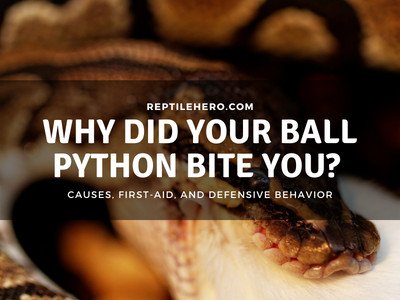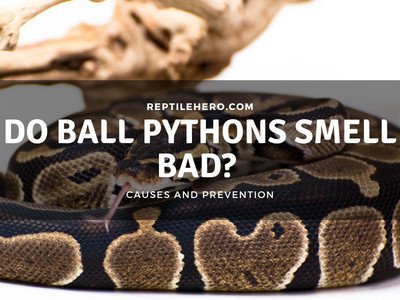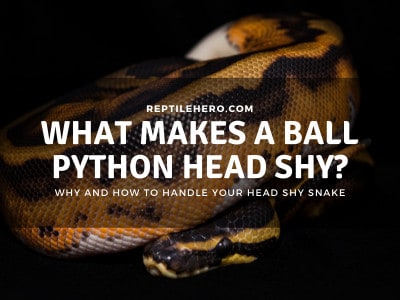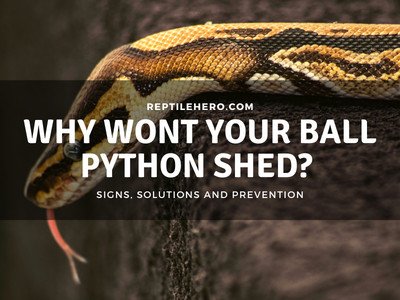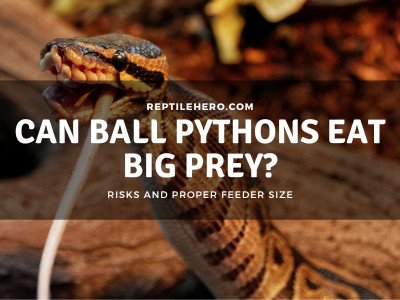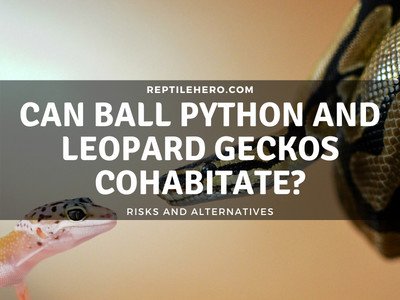Can Ball Pythons Eat Chicks? (3 Pros and Cons!)
Ever seen chicks used as feeders at your local zoo and thought it was a good alternative for your pythons? Are baby chicks even good for ball pythons? Diet is an important part of ball python husbandry and a simple mistake can affect the health of your snake!
Ball pythons can eat baby chicks less than a week old. Chicks are great feeders because they are affordable and easy to get. Studies even show that wild ball pythons have birds as the main part of their diet. Hence, small poultry animals like chicks are a safe choice as ball python feeders.
Ball pythons are proven to eat birds, mammals, and reptiles. So can chicks be a good feeder for them? What are all the factors that should be kept in mind when feeding one? Can pythons eat raw meat? Find out all the answers to these down below!
3 Advantages of Feeding Chicks to Your Ball Python
Day-old chicks can be a good ball python feeder due to their: 1) cheap price, 2) availability, and 3) good size.
1. Cheap Price
Compared to staple ball python diets like rats and mice, day old chicks will cost 30–50% less, regardless if they are alive or frozen. Frozen chicks are often sold for about 1 dollar per piece and 50 cents each when bought in bulk.
Laying-type chickens can lay around 150–250 eggs per year which is why day-old chicks are super affordable snake feeders!
The price of feeder chicks will also vary depending on other factors like shipment fees. However, chicks are generally cheap wherever you are.
2. Readily Available
Day-old chicks are some of the most popular livestock not only for humans, but also for ball pythons. Though availability will depend on the location, frozen chicks can mostly be shipped.
With more and more sellers of frozen prey items, chicks will always be available as feeders for ball pythons—especially since they are also used for other things such as human food.
If you are lucky, you may be near a poultry farm or a private chicken breeder. You can procure either live or frozen day-old chicks straight from them!
3. Good Size
A day-old chick that’s about 200 grams is a great feeder size for ball pythons. They usually weigh around 30–40 grams, which is comparable to small-medium mice.
It is recommended to stick to a feeder ratio of 10–15% when choosing the feeder for your ball python.
For example, if your ball python is currently 250 grams in weight, the proper size of feeders should be around 25–30 grams.
In relation to this, keepers have shared that they feed 2–3 chicks to their 600-gram ball pythons and bigger.
3 Problems of Using Chicks as Ball Python Feeders
Day-old chicks can be subpar feeders for ball pythons due to their 1) fast growth rate, 2) breeding difficulty, and 3) lacking calcium content.
1. Fast Growth Rate
If live day-old chicks have not yet been consumed by a ball python, it will grow fast and might not become too big for feeding. Chicks will start out 30–40 grams at a day old and then grow as big as 150–180 grams in just a week.
This is a big con to those who prefer feeding live chicks to their ball python.
They might buy several chicks at a time. Then, if their python can’t eat them all, they will be left with another animal to take care of!
However, if you are planning to feed frozen prey to your ball python, this should not be a problem at all.
2. Difficulty to Breed
Chicks are harder to breed as ball python feeders. Besides growing fast, they also require incubators and ample space for roaming.
If you are willing to invest in equipment and more space for breeding day-old chicks for your python, the result can also be problematic—especially if you find yourself producing a lot more than you would ever need!
It will be hard to take care of all of the growing chicks and it is not practical if you only keep one or a few ball pythons.
Honestly, if you want to breed your own feeders for your ball pythons I recommend mice and rats over chicks. These rodents are prolific breeders and do not require incubation equipment or a lot of space.
3. Lacks Calcium
Despite being relatively nutritious, day-old chicks have lower calcium content which is important for bone health.
| Content | Day Old Chicks | Juvenile Mice | Juvenile Rat |
| Dry Matter % | 23 | 29 | 30 |
| Crude Protein % | 68 | 61 | 58 |
| Crude Fat % | 21 | 28 | 27 |
| Gross Energy (kcal/g) | 5.8 | 5.3 | 5.6 |
| Calcium % | 2.5 | 4.8 | 8.7 |
Due to their lower calcium content, I recommend providing day-old chicks as a “part” of your ball python’s diet instead of giving it as their only staple feeder.
Insufficient calcium intake can lead to metabolic bone disease. Some ball python keepers that only provide a strictly poultry-based diet have shared that this indeed happens.
>>Learn more about the other ball python feeders in our article can ball pythons eat rats and mice?
Proper Age of Chicks for Ball Python Consumption
Ball pythons can eat day-old up to week-old chicks. Such young chicks range from 35–180 grams in weight. The most recommended age for chicks as ball python feeders is 1-day old.
| Age (Days) | Weight (Grams) |
| 1 | 35–45 |
| 2 | 50–60 |
| 3 | 60–80 |
| 4 | 80–100 |
| 5 | 100–110 |
| 6 | 110–130 |
| 7 | 130–160 |
| 8 | 160–180 |
Baby chicks, specifically day-old ones, are better than chick than one week because they have a lot less feathers. As such, older chicks are harder to digest for a ball python.
Bird feathers are made up of keratin which cannot be digested by ball pythons.
Since older chicks have more feathers, they can cause digestive issues for ball pythons, especially when offered as a staple diet. Old chicks can cause impaction which might need veterinary assistance.
>>Want to learn more? Check our article on do ball python poop smell bad?
How to Feed Chicks to Ball Pythons (2 Ways!)
Chicks can be fed to ball pythons in 2 ways: 1) frozen-thawed or 2) live.
1. Frozen-Thawed
Ball pythons can eat frozen chicks which must be thawed before consumption. The standard temperature of a properly thawed feeder should be around 95–100°F which can be measured using a temperature gun.
Pro Tip: Have a dedicated area for preparing your ball python’s food. This will can reduce or even eliminate the risk of salmonella infection.
Also, you should always sanitize your hands and tools before and after preparing your python’s because you are handling dead animals which are full of bacteria.
For thawing frozen chicks, I recommend placing them inside a plastic bag. Next, place it out of the freezer overnight inside an iced bowl before your pet’s consumption.
Then use hot water—not boiling water—to thaw the frozen feeders, which are still inside the bag, for 10–15 minutes.
Warning: Never thaw out any frozen feeders in the microwave. This can cause it to explode inside the machine or when consumed by the ball python which will leave a big mess.
Then once the chicks have warmed through, you can proceed to feed them to your ball python. Unconsumed feeders should be thrown out to avoid them from rotting further.
2. Live
Ball pythons can be fed live day-old chicks. Live prey can stimulate hunting responses in a ball python and it will be easier for the keeper since there is no complicated preparation required.
Feeding live day-old chicks may be frowned upon by some keepers in the community. However, feeding live prey can actually be an additional way to provide enrichment to your snake.
To start, it is important to gather the feeders into one container and feed them immediately, one by one to the ball python. Depending on the weight of your ball python, you can give more than one 1-day old chick per feeding.
If you are going to feed live chicks to your ball python, remember that it should always be supervised and the feeder must always be removed from the enclosure if not consumed.
Although chicks are generally harmless, they can still inflict minor injuries by pecking or clawing at the ball python. So supervision is advised during live feeding.
Is it Safe to Feed Ball Pythons Raw Chicken Meat?
There has been anecdotal evidence that ball pythons can safely eat raw chicken meat. However, feeding raw chicken is not recommended and it provides insufficient nutrients such as calcium and minerals for the snake’s needs.
Raw chicken is rich in protein and big chunks can be seen being fed to bigger pythons as well. So it is technically “safe” for them to eat but not as a staple diet.
However, since they often lack some parts like bone, blood, and other components of whole prey, they will lack nutrients like calcium, phosphorous, and other vitamins. Most raw meat will also come frozen so this will be another factor that reduces its nutritional value.
Raw meat is not a treat for ball pythons since doesn’t have the same body temperature of a live feeder. Plus, some processed meats can be quite unappetizing to a snake.
Instead of offering raw meat, you can just add variety to your ball python’s diet. Because even though they have rodents as a staple diet in captivity, ball pythons are proven to eat birds in the wild [3].
Comparison of Ball Python Feeders: Chicks vs Rodents
Chicks and rodents can both be great ball python feeders and have similar nutritional values for protein and fat. As live feeders, chicks are less dangerous and can’t inflict serious injuries on ball pythons unlike rats and mice. However, rodents last longer for live-feeding as they don’t grow as fast as chicks.

In terms of size, baby chicks are similar to young adult–adult mice. But rats are much bigger than both of these feeders.
Rodents can be more harmful than chicks when fed live to a ball python. They are faster and equipped with sharp fangs while chicks only have sharp beaks and claws.
In terms of keeping for later consumption, rodents can be kept for longer periods of time while chicks can outgrow the proper size in just a week.
But as I’ve said in the past section, feeder-related ball python injuries and fast growth rate can be avoided if you feed with frozen feeders. This is true for both chicks and rodents.
Further Questions
Can a ball python eat a full-grown chicken?
It is very unlikely that a ball python can eat a full-grown chicken due to their weight and size. However, there are bigger python species that can consume prey similar to their own size. Nevertheless, there is no strong evidence of ball pythons eating full-grown chickens.
Can you pre-kill a day-old chick for ball pythons?
Pre-killing a chick can be done but only through a carbon-gas chamber. Unlike rodents, chicks are commonly culled manually by the removal of their head, which can still be eaten by a ball python.
Summary of Chicks as Ball Pythons Feeders
Ball pythons can eat chicks. It is recommended to add them to the snake’s diet for variety. Chicks are great feeders due to their cost, availability, and size. Conversely, they grow too fast, are hard to breed, and aren’t calcium-rich.
In feeding chicks to ball pythons, the best age is 1 day old. But 2–8 days old chicks can still be given as feeders depending on how big a ball python is. There are 2 ways to feed chicks to ball pythons, namely as frozen-thawed or live.
Chicks are similar to mice and rats in terms of nutritional content except for calcium. In comparison to rodents, chicks are safer live feeders but they grow really fast within a short period.
Sources
[1] https://www.academia.edu/418766/Suitability_of_day-old_chicks_as_food_for_captive_snakes

